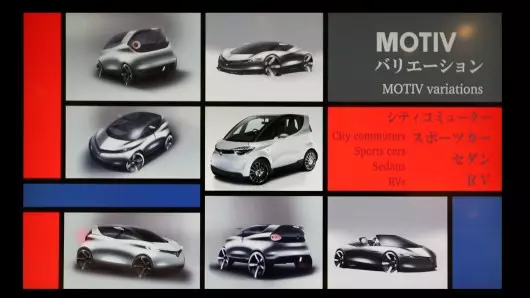Well, truth be told, Yamaha is no stranger to the automotive world. It has already supplied engines for Formula 1, which justified the almost birth of its first car, the fantastic super sports car OX99-11, and developed engines for other brands such as Ford or Volvo. But Yamaha as a brand or car manufacturer is a reality yet to happen.
A concept was unveiled at the Tokyo salon that could turn into a productive reality as early as 2016. The Yamaha Motiv, like any self-respecting concept, was introduced as Motiv.e, which is like saying, “the future is electric ”. It is a city car, similar in appearance to the Smart Fortwo. It is not the first and will not be the last conceptually identical to the small Smart, so we have to ask, what is the relevance of the Yamaha Motiv, and why is such an exciting fuss being generated?
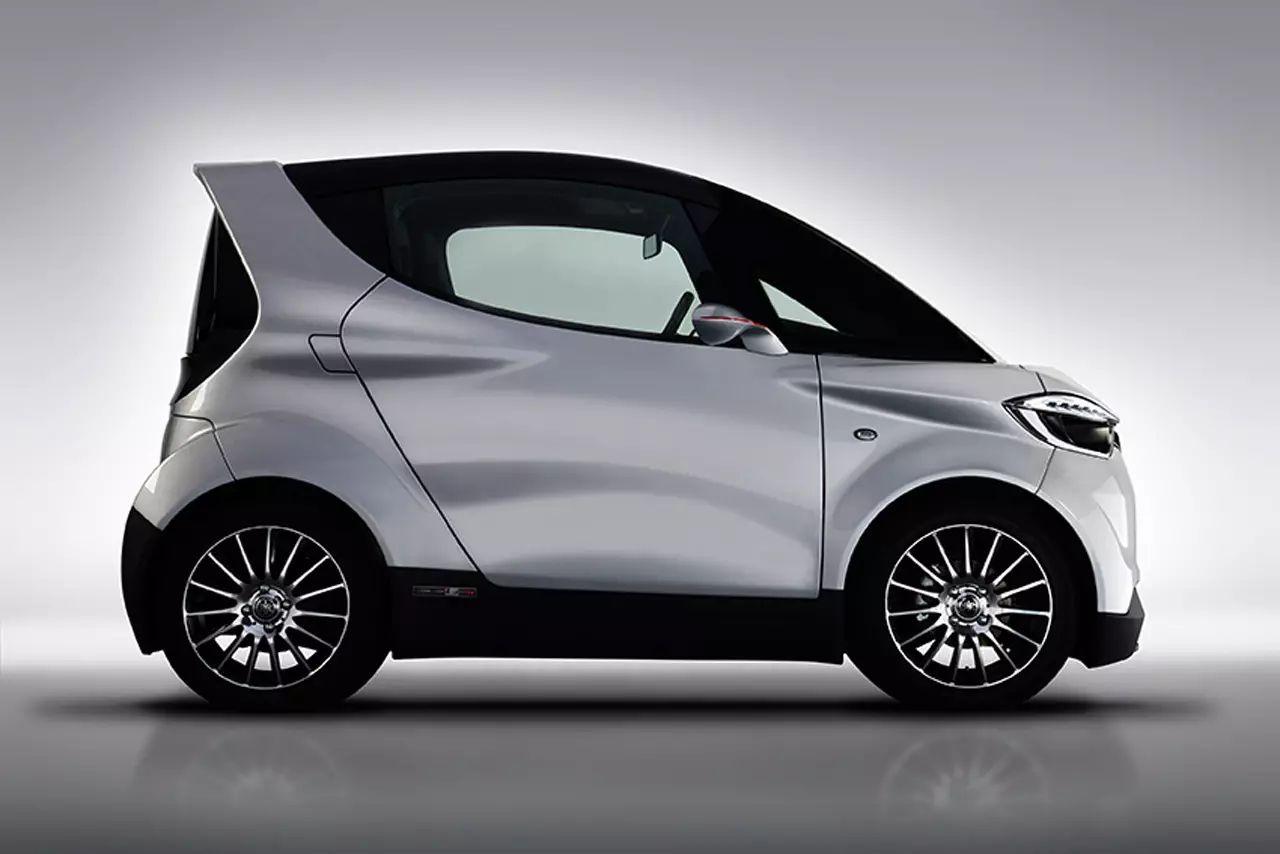
Gordon Murray is behind Motiv.e
It is due not only to being the most likely first car of the brand, but above all to the man behind its conception, one Gordon Murray.
They may not know Gordon Murray, but they certainly must know the machine. McLaren F1 is its most famous “son”. When you design something that is still revered and considered by many as “The Super Sports”, you usually pay attention to every step taken.
Gordon Murray, trained in mechanical engineering, made his name in Formula 1, having been part of Brabham and McLaren, with which he won the 1988, 1989 and 1990 championships. it met his ideals of simplification and lightness. He was an active part of the development of the Mercedes SLR, which turned out to be, according to the “evil tongues”, the project that made him turn his back on McLaren.
He would eventually form his own company in 2007, Gordon Murray Design, with engineering and automotive design consulting services. It allowed him to develop several of his ideas, one of which stood out: reinventing the way cars are built, with a process called iStream.
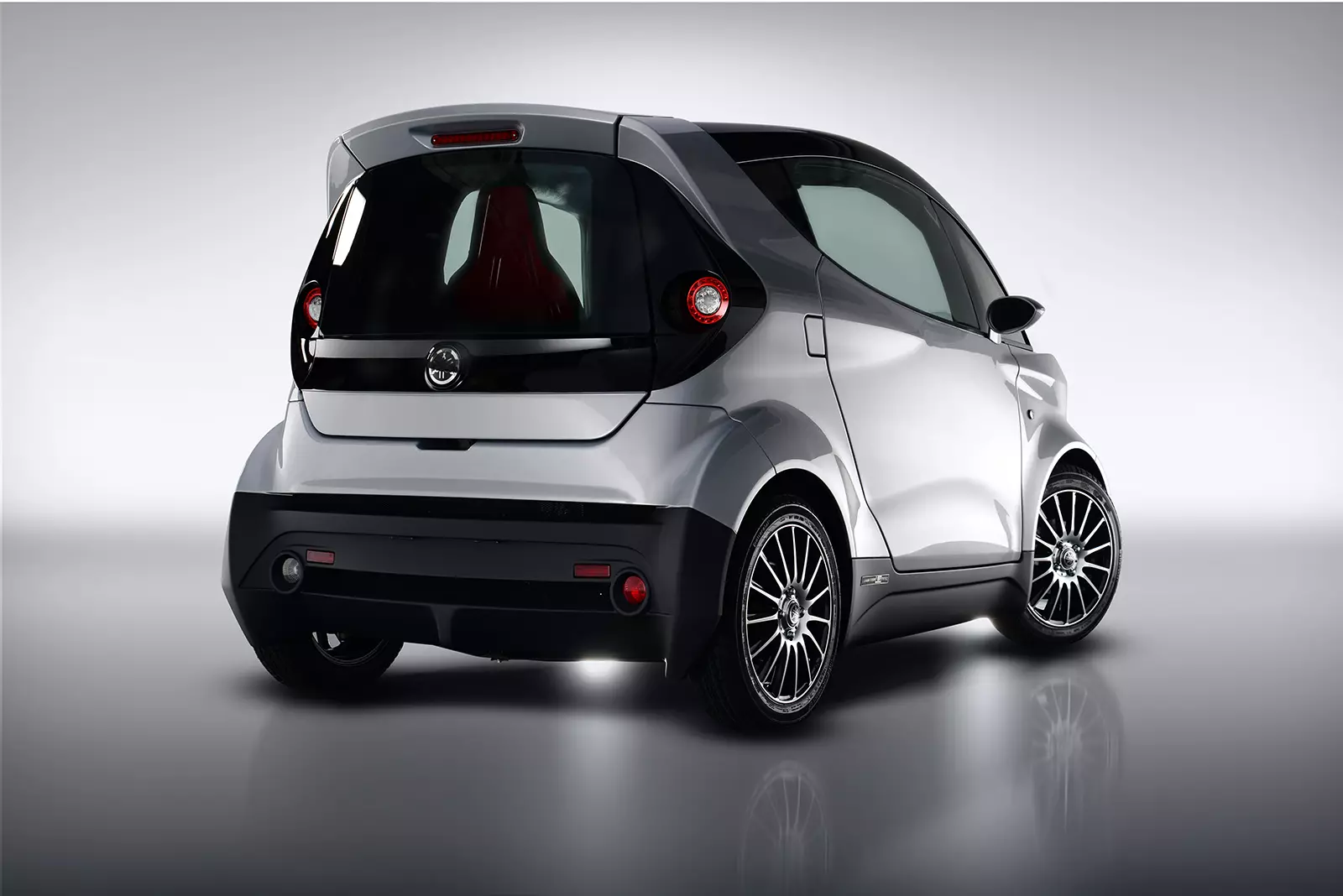
iStream, what is this?
The purpose of this process is to simplify and reduce the costs associated with car production. How do you do it?
By eliminating metal stamping and spot welding that generate common monocoques. As an alternative, it uses a tubular-type structure, complemented by panels in composite material (with technology derived from F1) for walls, ceiling and floor. This solution allows you to combine lightness, rigidity and the necessary safety levels. And instead of soldering, everything is glued together, saving weight and production time.
For those who have doubts about the power of glue, this is nothing new in the industry. Lotus Elise, for example, debuted this process in the 90s, and so far, there has been no news of Elise falling apart. The exterior panels do not have any structural function, being in plastic material and pre-painted, allowing quick change for repair reasons or easily changed to other bodywork variants.
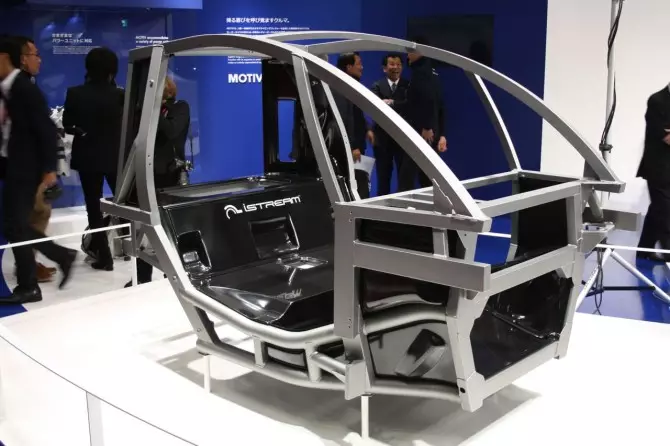
The results are positively diverse. With this process, the hypothetical factory could occupy only 1/5 of the space occupied by a conventional factory. By eliminating the presses and painting unit, it saves space and costs. Productive flexibility is also superior, given the separation of structure and bodywork, allowing for greater ease and lower costs in the production of different bodies on the same production line.
If Yamaha wanted to enter the automotive world, it definitely chose the ideal partner. Motiv.e is the first production-ready application for Gordon Murray's iStream system. We already knew a couple of prototypes from Gordon Murray Design, which served to demonstrate the functional process, with the nomenclatures of T-25 (image below) and the electric T-27.
The Yamaha Motiv started as a T-26 project. Development started still in 2008, but with a global crisis setting in, the project was frozen, having only resumed in 2011, with the health of the global economy showing signs of recovery.
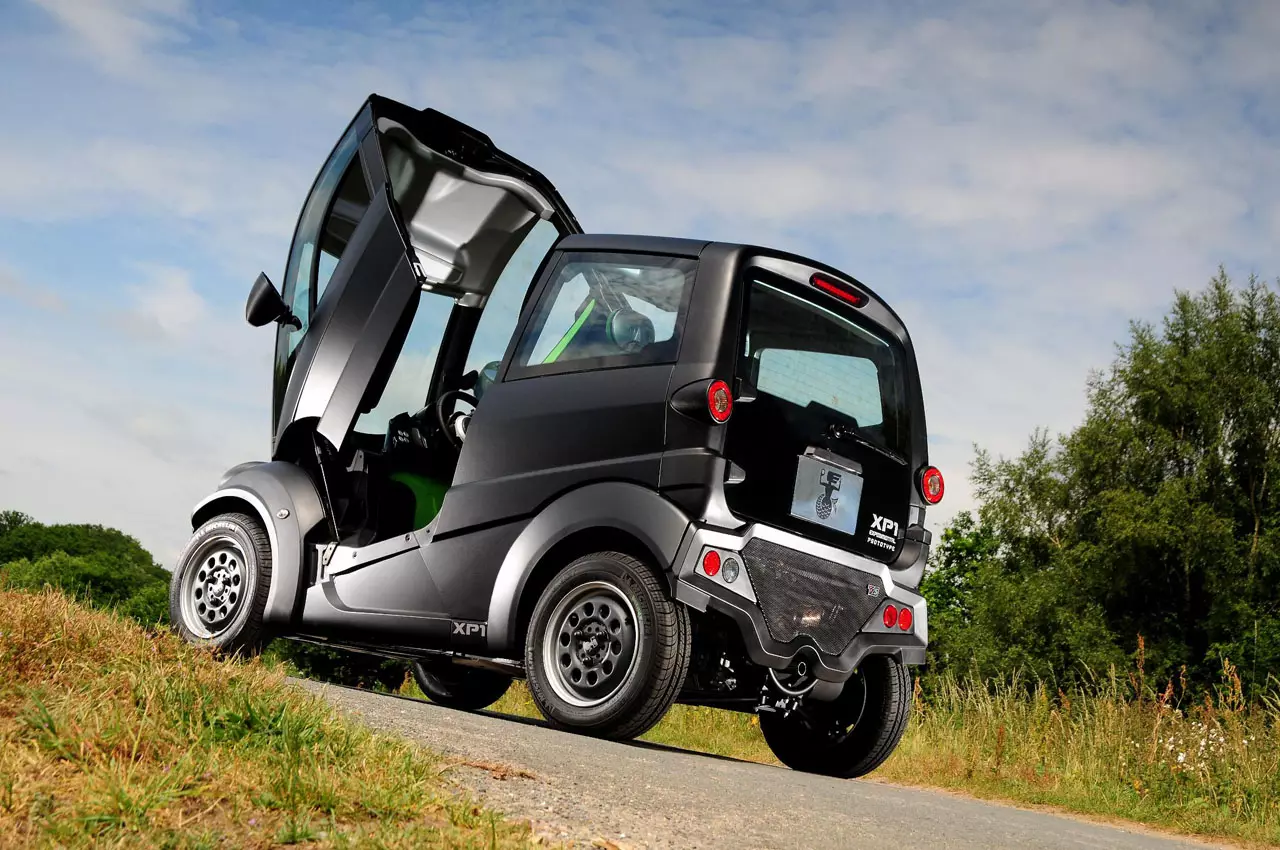
The T-25 and T-27, true prototypes lacking in styling, and much criticized for that, had a series of peculiar characteristics in their design. Smaller than the Yamaha Motiv, they had seating for three people, with the driver in a central position, as in the McLaren F1. The doors to access its interior were notable for their absence. Instead of doors, part of the cabin lifted with a tilting motion.
The Motivation
The Yamaha Motiv did not inherit these intriguing solutions from the T prototypes, unfortunately. It features conventional solutions such as: doors to access the interior, and has two places, side by side, as required by the regulations. These options are understandable, as they will make it easier for the market to accept a new car of a new brand.
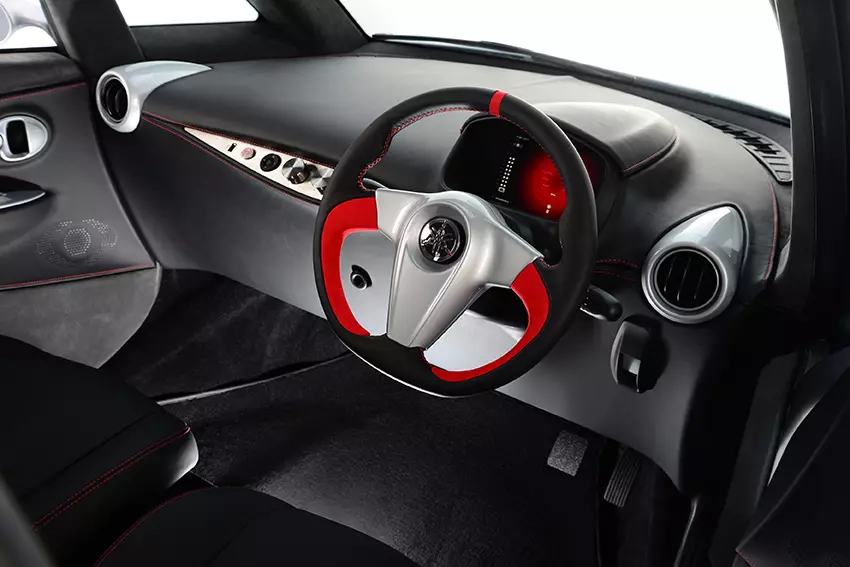
Revealed at the Tokyo Hall as Motiv.e, with the said electric motor, shares the engine with the T-27. The engine, originating from Zytec, delivers a maximum of 34 hp. It seems small, but even in this electric variant the weight is moderate, just 730 kg including batteries. For comparison, that's 100 kg less than the current Smart ForTwo. Like most electric cars, it has only one speed, allowing the torque to reach a maximum of 896 Nm(!) at the wheel.
Top speed is limited to 105 km/h, with acceleration from 0-100 km/h being less than 15 seconds. The announced autonomy is about 160 real km and not homologated. Recharging times are as low as three hours in a household outlet or one hour with a quick charging system.
More interesting is the already planned variant with a small 1.0 liter petrol engine from Yamaha, to debit between 70 and 80 hp. Combined with the low weight, we can be in the presence of a lively city, with acceleration from 0-100 km/h in 10 seconds or even less, well below any urban competition.
Whether electric or petrol, just like the Smart, the engine and traction are at the rear. The suspension is independent on both axles, the weight is low and the wheels are modest (15-inch wheels with 135 tires at the front and 145 at the rear) — steering doesn't need assistance. City people with a steering feel?
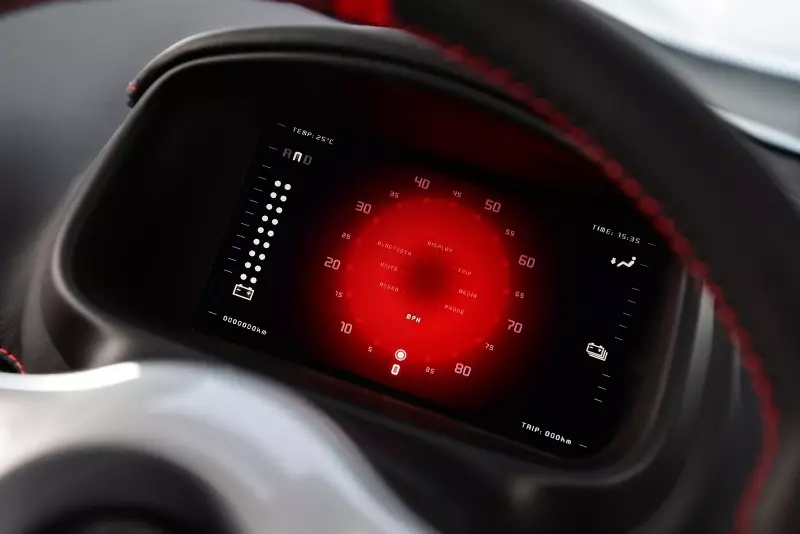
It features the same length as the Smart ForTwo, 2.69 m, but is narrower by nine centimeters (1.47 m) and shorter by six (1.48 m). The width is justified to be under the rules that govern Japanese kei cars. Yamaha hopes to export the Motiv, but first it will have to succeed at home.
At the end of this year, or at the beginning of the next, Yamaha will officially announce the approval or not of the project. As already mentioned, if it goes ahead, the Yamaha Motiv should only start being produced in 2016. Due to the concept's development status, it should only be a matter of ceremony. The behind-the-scenes work doesn't stop.
To demonstrate the validity of the technical solution, and focusing on its flexibility, we can see in the image below, a frame taken from a promotional video, a varied number of possibilities based on the same base. From an elongated body with five doors and four or five seats, through to a compact crossover, to short, sporty coupés and roadsters. Flexibility is the watchword that is demanded of any platform today, and the iStream process takes it to new heights, with the advantage of lower costs. Come 2016!
